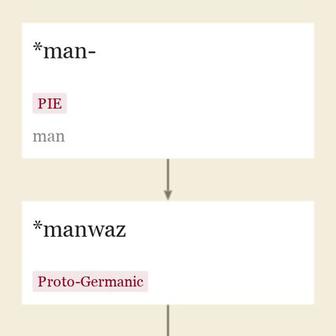tinman n.
"
Entries linking to tinman
Old English tin, from Proto-Germanic *tinom (source also of Middle Dutch and Dutch tin, Old High German zin, German Zinn, Old Norse tin), of unknown origin, not found outside Germanic.
Other Indo-European languages often have separate words for "
Meaning "

"
Sometimes connected to root *men- (1) "
Specific sense of "
Man also was in Old English as an indefinite pronoun, "
As "
Man-about-town "
So I am as he that seythe, 'Come hyddr John, my man.' [1473]
MANTRAP, a woman's commodity. [Grose, "Dictionary of the Vulgar Tongue," London, 1785]
At the kinges court, my brother, Ech man for himself. [Chaucer, "Knight's Tale," c. 1386]
updated on February 09, 2014